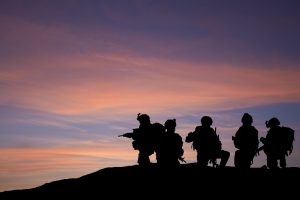Another quarter, another Special Inspector General for Afghanistan Reconstruction (SIGAR) quarterly report. In its 52nd quarterly report, published today, SIGAR notes that fewer than a thousand U.S. military personnel remain in Afghanistan as the withdrawal nears completion. At the same time “The news coming out of Afghanistan this quarter has been bleak.”
U.S. data suggested that that enemy-initiated attacks have increased “significantly” since the signing of the February 2020 deal between the United States and the Taliban. Although the Taliban have avoided attacking withdrawing U.S. and coalition troops, they nevertheless launched an offensive against Afghan forces. The Taliban have taken control of a number of districts, some estimates indicating as many as half of the country’s districts, but SIGAR points out that the government continues to control all 34 provincial capitals, including the capital, Kabul. Nevertheless, the “overall trend is clearly unfavorable to the Afghan government, which could face an existential crisis if it isn’t addressed and reversed.”
Since 2008, SIGAR’s regular reports have provided a baseline source of information about U.S. government activities in Afghanistan, from the building of roads and schools to the status of the Afghan security forces Washington had committed to train and equip. Through the years certain metrics have appeared and vanished behind veils of classification. Afghan National Security Forces (ANSF) numbers, for example, have blipped in and out as have district-level control data and other points of reference.
Essentially, wherever the U.S. dollar goes in Afghanistan, SIGAR — led by John F. Sopko since 2012 — tries to follow.
The U.S. withdrawal from Afghanistan is nearly complete. U.S. President Joe Biden said the withdrawal would be final by August 31 and Central Command commented recently that the withdrawal is 95 percent complete. At the same time, Washington has pledged continued military and financial support to the Afghan government. That begs the question: what’s next for SIGAR’s mission?
In the latest quarterly report, SIGAR notes that the withdrawal will “complicate the critical task of overseeing U.S. funds still intended for reconstruction programs” in Afghanistan. Around $6.7 billion is at present appropriated and billions more is expected to be appropriated in the future. In a June 1 letter to Congress, SIGAR made four recommendations to maintain oversight after the withdrawal. Those recommendations included conditioning U.S. funding on the Afghan government giving SIGAR and other oversight organizations access and similarly conditioning funding funneled through internationally administered trust funds, such as those under the World Bank umbrella, on SIGAR getting access to records of how such funds are disbursed. “Some such intermediaries have resisted SIGAR data requests,” SIGAR notes. SIGAR also asked Congress to re-establish the Afghanistan Threat Finance Cell (ATFC) to “identify, disrupt, and eliminate illicit financial networks in Afghanistan, particularly those involved in narcotics trafficking, illicit financial transactions, and terrorist networks.” Finally, SIGAR recommended that the Departments of Defense and State consider setting up a “traditional Security Cooperation Office at the U.S. Embassy in Kabul to provide security assistance to the Afghan government.”
SIGAR says it will continue to provide oversight, in particular using geospatial imaging and GPS to monitor development projects from afar. It is also “prepared to co-locate a small staff with any ‘over the horizon’ security-assistance office for Afghanistan that the Department of Defense may establish after the military withdrawal from the country is complete.”
How long SIGAR continues to oversee the spending of U.S. dollars on and in Afghanistan depends on the U.S. Congress. The organization makes its case: “SIGAR’s oversight mission has become both more consequential and more challenging in the absence of a major U.S. troop presence… SIGAR remains the only U.S. oversight agency on the ground in Afghanistan, so maximizing the reach and impact of our statutory duty takes on increased importance.”

































